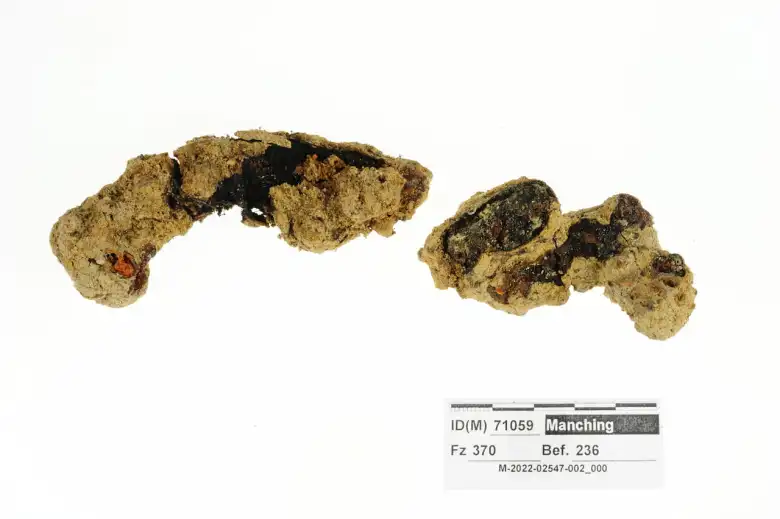
Archaeologists discover 2,000-year-old studded Roman military sandal in Germany
Archaeologists have discovered the remains of a 2,000-year-old studded Roman military sandal near an auxiliary Roman camp in Germany.
Archaeologists from the Bavarian State Office for Monument Protection uncovered the military-style sandal while excavating a civilian settlement on the outskirts of a Roman military fortress near Oberstimm.
According to a translated statement from the Bavarian State Office for Monument Protection (BLfD), the settlement was occupied for a period between 60 and 130 AD.
Surprising discoveries like Oberstimm Sole show again and again that even after archaeological excavations are completed, valuable information is still being gathered. “This underlines the invaluable work of our restorers,” said Mathias Pfeil, general conservator of the Bavarian State Office for the Protection of Monuments (BLfD).

The rare find was concealed by a thick layer of corrosion, giving it the appearance of two indistinct chunks of twisted metal. In fact, one curved and heavily corroded piece of metal was originally suspected to be the remains of a sickle. An X-ray taken in the laboratory of the Bavarian State Department for Monument Conservation (BLfD) revealed that the worn lumps were nails.
The shoe was a caliga, a heavy-duty, clawed sandal that was part of the uniform issued to Roman legionary soldiers and their auxiliaries. The shoe was worn by the soldier while walking and the nails provided traction. Iron nails were used to reinforce and stabilize the leather sole. They gave the shoe stability and traction when walking over rough terrain, just as modern crampons do.

According to Amira Adaileh, an expert at the Bavarian State Office for the Protection of Monuments, the discovery shows that the practices, lifestyles and also the clothing that the Romans brought to Bavaria were adopted by the local population.
Such shoe nails are often discovered in Roman sites, but only in certain cases are they preserved together with the remains of the leather sole. Comparable findings in Bavaria are so far known from only a handful of sites and offer important new insights into Roman daily life and craftsmanship.
Bavarian State Office for the Conservation of Monuments
Cover photo: Bavarian State Office for the Conservation of Monuments
You may also like
- A 1700-year-old statue of Pan unearthed during the excavations at Polyeuktos in İstanbul
- The granary was found in the ancient city of Sebaste, founded by the first Roman emperor Augustus
- Donalar Kale Kapı Rock Tomb or Donalar Rock Tomb
- Theater emerges as works continue in ancient city of Perinthos
- Urartian King Argishti’s bronze shield revealed the name of an unknown country
- The religious center of Lycia, the ancient city of Letoon
- Who were the Luwians?
- A new study brings a fresh perspective on the Anatolian origin of the Indo-European languages
- Perhaps the oldest thermal treatment center in the world, which has been in continuous use for 2000 years -Basilica Therma Roman Bath or King’s Daughter-
- The largest synagogue of the ancient world, located in the ancient city of Sardis, is being restored











Leave a Reply